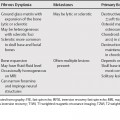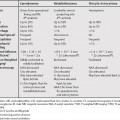93 Endogenous Cushing syndrome is usually adrenocorticotropic hormone (ACTH)-dependent (80 to 85%), and less likely ACTH-independent (15 to 20%). ACTH-dependent Cushing syndrome is usually secondary to a pituitary adenoma. ACTH-independent Cushing syndrome is usually secondary to a hyperfunctioning adrenal adenoma. Rarely, bilateral adrenal disease (ACTH-independent macronodular hyperplasia or primary pigmented nodular adrenal disease) can cause Cushing syndrome.1 The presence of an adrenal nodule in Cushing syndrome does not always indicate a hyperfunctioning nodule. An ACTH-dependent macronodular hyperplasia with a dominant nodule, or a nonhyperfunctioning adenoma can also cause this appearance. ACTH-producing adenomas will usually result in atrophy of the remaining adrenal tissue. Thus, in a patient with Cushing disease and an adrenal nodule with normal or hyperplastic adrenal limbs, the possibility of an ACTH-dependent hyperplasia (with an incidental nonhyperfunctioning nodule) or ACTH-dependent macronodular hyperplasia should be considered.2
Cushing Syndrome
Stay updated, free articles. Join our Telegram channel

Full access? Get Clinical Tree





